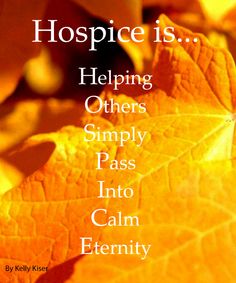
Hospice is a word loaded with meaning. Its specific definition is the pallative care offered to a terminally ill patient. In order to qualify, a patient must have a terminal diagnosis with 6 months or less to live. Those are loaded statements for many people having to face the diagnosis themselves, or help a loved one with the illness. For my family, it has meant being able to pass with dignity and peace.
My beloved Great-Aunt Marion was given a diagnosis of pancreatic cancer in 1990. At that time there were very few options and within months of the diagnosis Marion was receiving hospice services. She was able to stay in her home, her doctor came to her and a nurse and other aides helped us with her care. She was surrounded by those she loved, in the home she loved and her passage was peaceful.
History of hospice
Hospice services have come a long way since my aunt’s death. The origins of hospice date back to the 11th century where churches provided for pilgrims, travelers and those afflicted with incurable illnesses. In the 1950’s, Dame Cicely Saunders is credited with creating the modern system of hospice care in England which was further adapted in the Western world. In the US, the American Academy of Hospice and Pallative medicine was formed in 1988 and began certifying physicians in 1996. During the AIDS crisis in the 1980’s, hospice was largely a volunteer effort and was often the only solace offered those dying and often scorned by family and society. In 2010 over 1.5 million patients received hospice services. Hospice centers are there for those who either cannot stay in their home, or choose to come to the centers. No longer a volunteer led effort, hospice teams are composed of healthcare workers, social services providers and more. Medicare and other insurance now cover expenses associated with hospice care.
Death’s journey
My stepfather, Carl, was in his 90’s and had a variety of conditions including failing kidneys. He was put on dialysis. It was terrible. He was under a tremendous amount of pain that was unable to be treated. His life consisted of going to the dialysis center and back home. He slept in a chair. When you would call, he would ask,”Why am I still here?” One day a feeling washed over me and I called my mom and asked her if Carl knew about hospice. Mom paused and said, “I am not sure he does.”
I told Mom that I had a feeling that Carl did not know that hospice could make his transition easier and with far less pain than he was experiencing with a treatment that would not cure him. Mom talked to Carl and hospice representatives arrived that night to talk to him about their services. The next six weeks were the best six weeks that Carl had experienced in years. No more dialysis. He enjoyed going out and visiting with people, spending time with Mom and living pain-free. His disease no longer dictated every moment of his day, he was able to live life. The care of his hospice team gave him a quality of life and provided relief to my mother as well. Carl’s sister, Frances, also in her 90’s, came to visit and the two siblings enjoyed several days of reminiscing and reconnection. On the last Friday of Frances’s visit, the time had come. Two caring nurses carried Carl to the car and he checked into the hospice center. Saturday morning, he was gone.
Hospice care isn’t right for everyone, but it was the right choice for my family. It carried us through death’s journey, and provided comfort when we needed it the most. Like many people, it used to be that when I heard the word ‘hospice’ I immediately thought of death. Now, I think of living. Hospice gave Marion and Carl a chance to live out their final days with peace and dignity. It allowed my family and me to live those days with them, creating memories we will cherish for the rest of our lives.
Click here to learn more about hospice care







